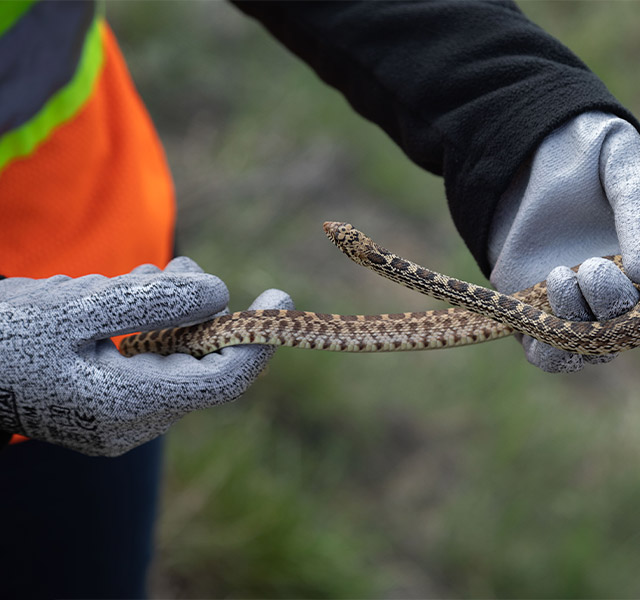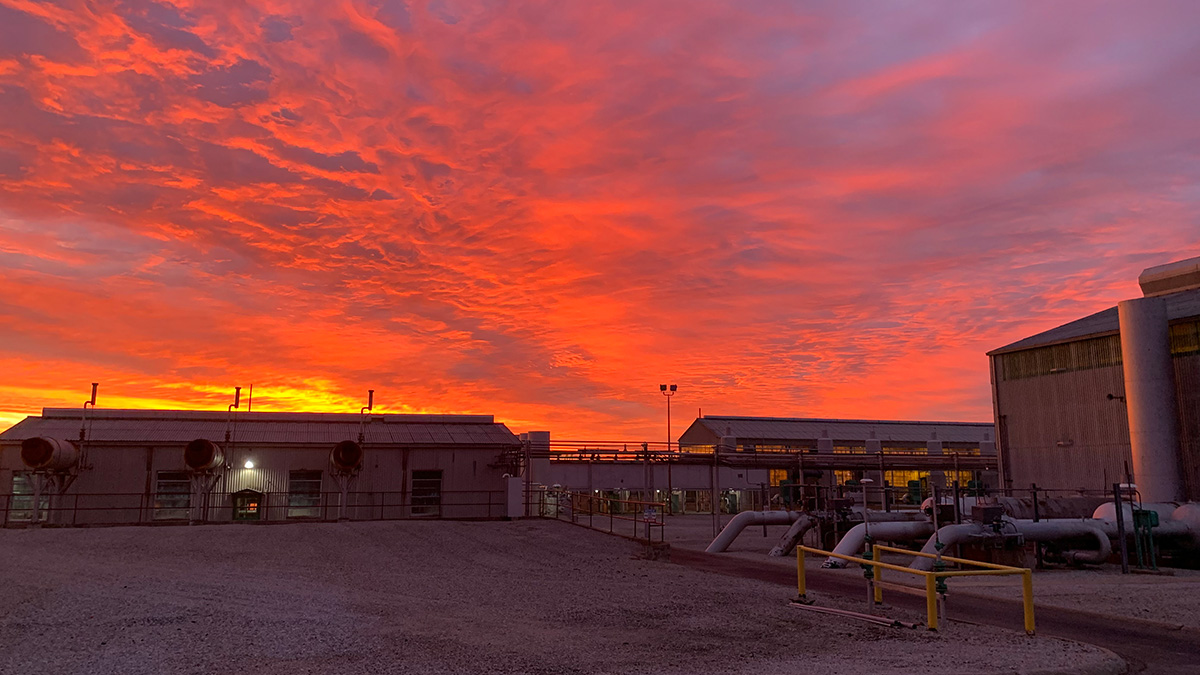Apr 8, 2024
Keystone XL snake monitoring program helps protect biodiversity
Posted by TC Energy
More than 800 snakes slither out of hibernation this spring in southern Alberta
Statistically speaking, no one in Alberta has ever died from a rattlesnake bite before. Which is somewhat surprising, considering historically, southern Alberta has been home to significant populations of prairie rattlesnakes.
Since last April, the Keystone XL project team has been conducting snake monitoring research in southern Alberta at multiple sites near the pathway of the pipeline. In Alberta, prairie rattlesnakes and other snake species are designated as species of special concern.
While construction in the area has not yet begun, the multi-year monitoring program is intended to span pre-construction through to post-construction. The research will help determine the effects of our pipeline construction activities on snakes and validate the success of our planned mitigation measures to protect them.
Capture, measure, release and repeat
Adam Martinson is the principal of AJM Environmental Inc., who has been the lead consultant for the monitoring program.
Last spring, his team set up fences at the sites of known snake hibernacula – or winter snake dens – in the area, to catch snakes coming out of hibernation. Each snake was weighed, measured and examined to determine sex before being tagged with a unique transponder – the size of a grain of rice – to track when the snake leaves and returns to the hibernacula.
“The snakes were released with nothing hurt but their pride,” says Adam. “Rattlesnakes will almost always use the same hibernacula year after year and will share with other kinds of snakes. We returned in the fall to re-capture the snakes, re-measure and then release them again just in time for them to go into hibernation.”
More than 700 snakes were tagged in 2019 – 600 of which were rattlesnakes. Other snakes included bullsnakes, wandering garters and plains garters.
Early this April, the team returned to the sites to capture, measure, and weigh the snakes as they left their winter hibernacula for the summer. So far, they have counted more than 800 snakes. Once spring monitoring is complete, the team will have a full year of data, establishing baseline numbers for the local snake population.

Jennifer Barker is the lead environmental planner for KXL. She explains that the monitoring to date has provided both the company and the province with a great understanding of the current size, health and diversity of the snake populations in the south eastern native prairie region of Alberta.
“I’ve been surprised at the number of snakes coming out of hibernation this spring that aren’t tagged – it’s like a bottomless pit of snakes,” says Jennifer. “We’re learning so much about snakes – such as bullsnakes seem to go into hibernation and come out of hibernation earlier than expected.”
Jennifer says the research results will help inform future mitigation strategies and construction designs so that the company is always improving how we are protecting wildlife on our projects.
“We’re also contributing to the provincial knowledge of snake species to support the government’s management strategies for snake populations,” she says.
Protecting biodiversity
Construction on the pipeline in sensitive snake habitat will begin in October this year after the snakes have all returned to their winter hibernacula.
Mitigation measures to protect the snakes will be in place throughout construction activities, including installing exclusion fences around the construction area to prevent snakes from slithering into the work site.
Trained snake handlers will also be onsite during construction to relocate any snakes safely away from the project footprint or access roads.
“This research has helped heighten the awareness of the importance of snakes in our local ecosystem, and they really have become our project mascot,” says Jennifer.
“We’re doing our best to be stewards of the environment – and this research has also helped remove the fear and mystery that may exist around snakes.”
As a Professional Biologist, Jennifer says she works for TC Energy because in her role, she has a chance to protect biodiversity and species at risk while helping construct much needed energy infrastructure.
Jennifer Barker
TC Energy, Professional Biologist
As the Keystone XL project crosses diverse landscapes in Canada and the U.S., the environment team is also working to protect other species of concern, such as amphibians, the burrowing owl, black-tailed prairie dog, sage grouse, ferruginous hawks, as well as rare plants.



